During a visit to Armenia, you’ll find no shortage of unique souvenirs to take home. While delicious food (like dried fruits) often tops the list, Armenia offers so much more to memorize your trip. Beautiful silver jewelry, traditional crafts, and one standout treasure: Armenian pottery.
With its history dating back thousands of years, Armenian pottery is more than just a craft. This timeless art form has been passed down through generations.
Armenian pottery holds a special place as it has earthy colors, intricate patterns, and symbolic designs. Let’s explore the world of Armenian pottery and its history.
Historical Background and Evolution
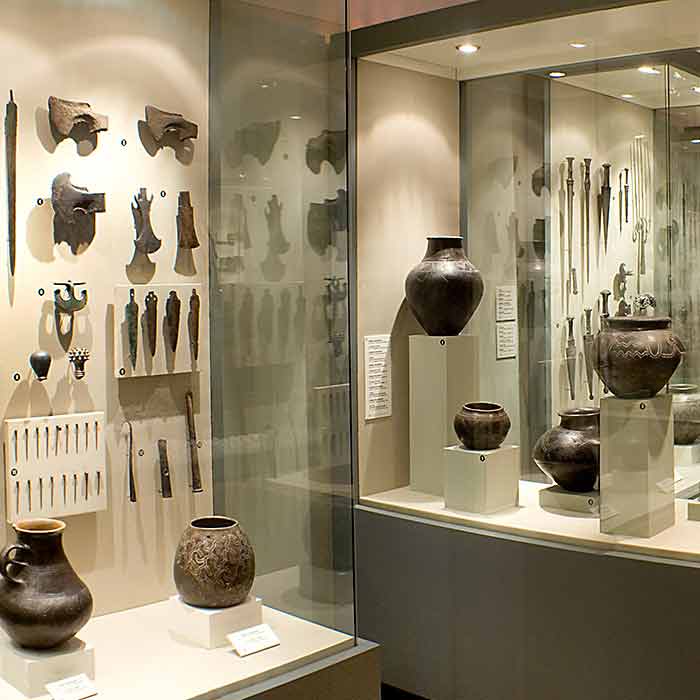
Photo: History Museum of Armenia
The pottery found on the territory of Armenia traces back to the 6th millennium BC when the early “pottery Neolithic” era saw the first fired clay pieces with basic designs. As time progressed, more sophisticated techniques emerged. Colored ceramics appeared around the 3rd millennium BC․ The next was the distinct black-burnished pottery of the Bronze Age. By the middle of the 2nd millennium BC, the potter’s wheel had become a staple tool, revolutionizing Armenian pottery production and enabling more intricate shapes and designs. By the way, you can find samples of very old Armenian pottery in the History Museum of Armenia in Yerevan.
The abundance of high-quality clays in Armenia played a crucial role in this craft’s development. Notably, Armenia’s “Armenian clay” (bolus armena) gained popularity across regions, even reaching ancient Greece and the Near East, where it became valued for its medicinal properties.
Pottery evolved significantly during the Kingdom of Van, with artistic and technical skills reaching new heights. In the medieval period, cities like Dvin and Ani became bustling centers for pottery, with craftsmen forming guilds known as amkars. These guilds promoted unity, sharing techniques like glazing, which added vibrant colors like cobalt blue and green. In the 9th–13th centuries, Dvin emerged as a hub for faience production.
In the 15th–18th centuries, one of the major centers of Armenian pottery art was Kutahya in western Turkey. Its main products were tiles and expensive dinnerware sets, which were also exported to Europe. Some samples are preserved in the museums, including the Mkhitarian Congregation’s Museum in Venice.
In the 19th century pottery making was still preserved in the cities and villages of Armenia. In the cities it was mainly in the workshops where men worked, in villages women were also involved in the process.
Unique Characteristics of Armenian Pottery
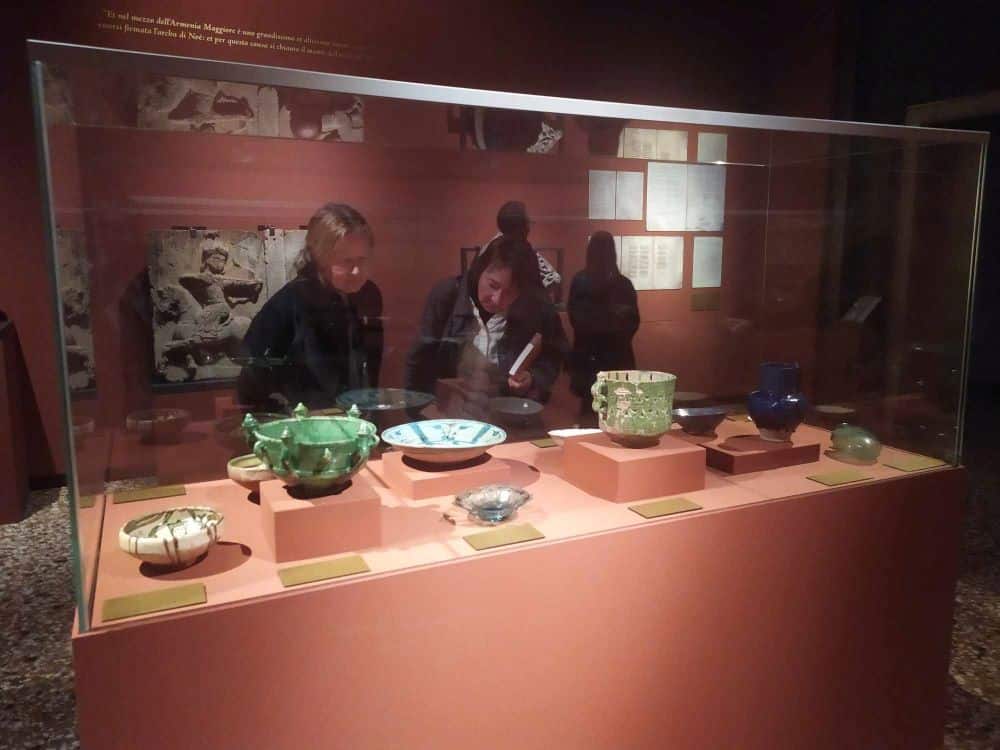
Armenian pottery is distinct in its use of locally sourced clays, each type adding unique characteristics to the craft. Red clay was the most widely used material․ It was very durable and had a rich hue. This clay was sourced from areas such as Dvin, the medieval Armenian capital, and the fertile Ararat Valley, while black clay was collected from regions like Aparan, Shirak, and Syunik.
Armenian potters also developed unique techniques like creating “transparent” faience by puncturing small holes in the raw clay vessels before coating them with a clear glaze. This technique, popularized in the city of Dvin, produced a translucent effect resembling fine porcelain.
In later centuries, Armenian craftsmen in cities like Kutahya continued to innovate, producing exquisite glazed tiles and wares.
Armenian Pottery of Jerusalem
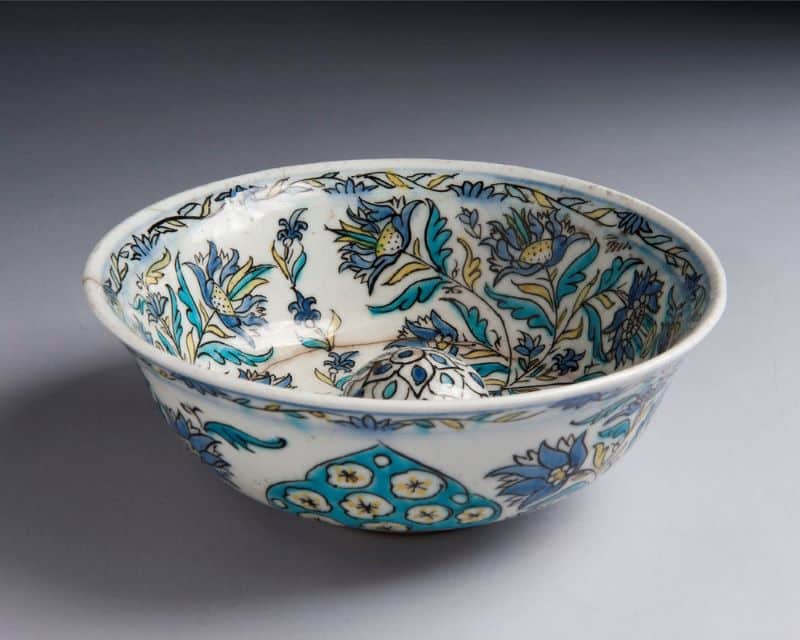
Photo: Armenian Museum of America
The Jerusalem tradition, which continues into the present day, was established by Armenian potters who descended from the Kutahya artisans. They brought their skills and techniques to Jerusalem in the early 20th century.
The Iznik ceramics, created between the 15th and 17th centuries, were some of the most prestigious works, marked by cobalt blue designs influenced by Chinese ceramics. Armenian artisans initially pioneered this tradition, known for its fritware with cobalt blue under transparent oxide. Later, bold colors like turquoise, green, and the unique Armenian bole red became signature hues.
The Armenian potters sustained their craft in Jerusalem by producing beautiful, hand-painted tiles and plates. These pieces, decorated with intricate floral and geometric designs, adorn churches and homes across Jerusalem.
Today, Armenian pottery workshops in Jerusalem continue working. The Balian family has upheld the Armenian ceramics tradition in Jerusalem for over a century, known for their intricate designs and commitment to preserving this craft across generations.
Most Common Armenian Pottery Pieces
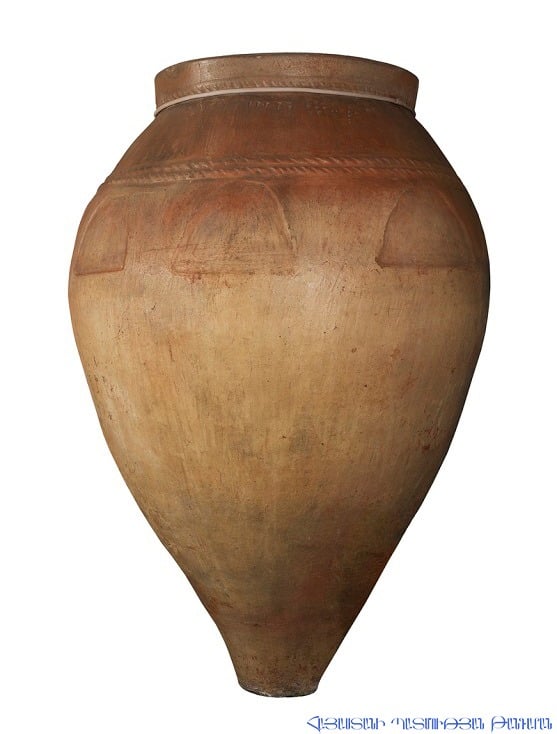
Among the most essential Armenian pottery items was the tonir, a large clay oven built deep into the ground. It has thick walls for baking bread and firing clay dishes. Standing about 1.25-1.4 meters high, the tonir held a central place in traditional Armenian households, often crafted by women.
Pottery artisans also produced the karas, towering storage vessels up to 1.4 meters tall with capacities of up to 200 buckets, used to store wine, oil, and grains. These versatile jars were significant in Hellenistic Armenia, even serving as burial vessels.
Everyday ceramic items included the oshnak, a single-handled vessel for storing oil and grains, and the kchuch, a dual-handled pot used for cooking. Armenians crafted jugs of all sizes, including zoomorphic designs for wine, while water was typically carried in tall clay vessels with narrow necks and broad bodies for stability.
Armenians also made clay milk pails, butter churns (khnotsi), and distinctive salt shakers called aghaman. Shaped like a pregnant woman, these figurative salt shakers featured jewelry and clothing details, representing the Mother Goddess and symbolizing fertility. Additionally, Armenians crafted clay oil lamps, amulets, beads, and seals.
Where to See and Buy Armenian Pottery?
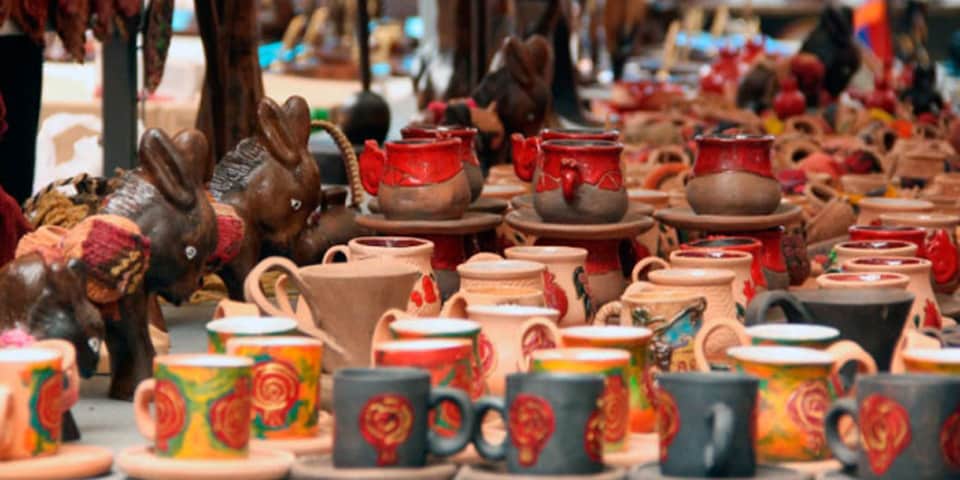
If you are in Yerevan, visit the History Museum of Armenia which has a big collection ranging from the oldest samples to the Middle Ages. There are unique big vessels for wine and also fine ceramics.
The best place to see modern Armenian pottery is at Vernissage, the open-air market in downtown Yerevan. Local artisans showcase a variety of pieces, from coffee cups to clay teapots, all crafted in traditional colors. You can also find pottery in souvenir shops around the city, especially along Abovyan Street.
